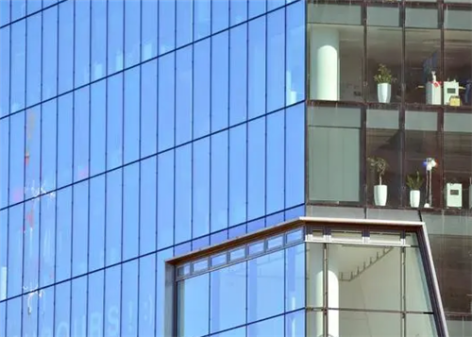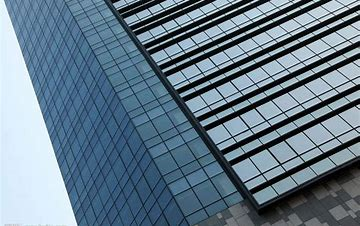As the core protective structure of modern building facades, the design and application of curtain walls require comprehensive consideration of multiple factors, including functionality, economy, and environmental impact. The following is a detailed analysis of the advantages and disadvantages of curtain walls, along with specific optimization directions:
Core Advantages of Curtain Walls
Curtain walls have significant advantages in terms of building functionality, aesthetic expression, and user experience due to their material and structural characteristics. They are the mainstream choice for modern high-rise buildings, commercial buildings, and public buildings:

1. Enhancing Architectural Aesthetics and Iconicity
Curtain wall panels are available in diverse materials (glass, metal, stone, etc.), enabling rich visual effects—glass curtain walls offer transparency and lightness to create a modern feel, metal curtain walls allow flexible shapes to design curved or irregular facades, while stone curtain walls convey a natural texture that conveys elegance and solemnity.
2. Optimizing indoor lighting and spatial experience
Transparent/semi-transparent curtain walls, such as glass curtain walls, maximize natural light intake, reduce energy consumption for artificial lighting indoors, and visually connect indoor spaces with the outdoor environment, alleviating the oppressive feeling of enclosed spaces.
3. Enhancing building energy efficiency and environmental adaptability
Modern curtain walls utilize material innovations (such as Low-E coated glass, insulated glass, and thermally insulated metal profiles) and structural optimizations to effectively block heat transfer: reducing heat loss in winter and blocking outdoor heat intrusion in summer, significantly lowering building air conditioning and heating energy consumption (some high-performance curtain walls can reduce building energy consumption by over 30%). Additionally, some curtain walls can be paired with dynamic shading systems (such as metal louvers or motorized shading curtains) to further adapt to varying seasonal lighting requirements.
4. Reducing Building Loads and Adapting to High-Rise and Large-Span Designs
Curtain walls are classified as “non-load-bearing envelope structures,” secured to the building structure via connectors, with their own weight significantly lighter than traditional brick walls (e.g., glass curtain walls weigh approximately 50-80 kg/㎡, while traditional brick walls weigh approximately 200–300 kg/㎡). This characteristic reduces the structural load on the building, providing greater flexibility for structural design in high-rise buildings and large-span spaces (such as sports arenas and convention centers), thereby lowering overall construction costs.
5. Efficient construction and convenient for later maintenance and updates
Unitized and prefabricated curtain walls adopt a “factory prefabrication + on-site assembly” model, reducing on-site wet work (such as masonry and plastering), and shortening the construction period by 20%-30%; at the same time, curtain wall panels (such as glass and metal panels) are mostly modular in design, so that when a part is damaged, it can be replaced individually without the need for a complete renovation, reducing later maintenance costs. For example, if a single glass panel in a commercial complex's glass curtain wall is damaged, only the corresponding section needs to be removed and replaced, without affecting the overall use of the building.
Disadvantages of Curtain Walls
The application of curtain walls also has limitations, particularly in terms of cost, environmental adaptability, and safety maintenance, which require special attention:
1. High initial construction costs
The materials used in curtain walls (such as Low-E insulated glass, titanium-zinc panels, and high-precision aluminum alloy profiles), manufacturing processes (such as prefabricated unit panels and custom-made irregular metal components), and installation techniques (such as high-altitude hoisting and sealing treatments) all result in significantly higher costs compared to traditional facades.
2. Risks of light pollution and heat island effects
Some glass curtain walls (especially those using ordinary reflective glass without low-emissivity coating) can produce strong light reflection, which may cause “glare” at specific angles, affecting pedestrian visual safety; simultaneously, large-area glass curtain walls absorb and reflect solar radiation, potentially increasing local temperatures around buildings and exacerbating the urban heat island effect, particularly in high-density urban areas.
3. Sealing performance failure may lead to leaks
The waterproofing and airtightness of curtain walls depend on the long-term performance of sealants (structural adhesives, weatherproof adhesives) and sealant strips. If sealant materials age, sealant joints are improperly treated during construction, or are subjected to prolonged exposure to wind, rain, and temperature changes, sealant strips may crack, sealant joints may detach, leading to water leakage and air infiltration. This not only affects indoor use (such as mold on walls or damage to electrical appliances) but also requires high-altitude work for repairs, which is both challenging and costly.
4. Shortcomings in winter insulation and summer heat insulation
Ordinary single-layer glass curtain walls and non-insulated metal curtain walls have poor thermal insulation performance: in winter, glass is prone to condensation, and indoor heat is lost quickly; in summer, direct sunlight causes indoor temperatures to rise sharply, requiring continuous air conditioning to cool the space, increasing energy consumption. If the project uses low-standard materials to control costs, this issue becomes more pronounced.
You can choose the type that suits you based on the advantages and disadvantages of the curtain wall, or contact info@gkbmgroup.com and our professionals will help you make the selection.
Post time: Aug-15-2025





